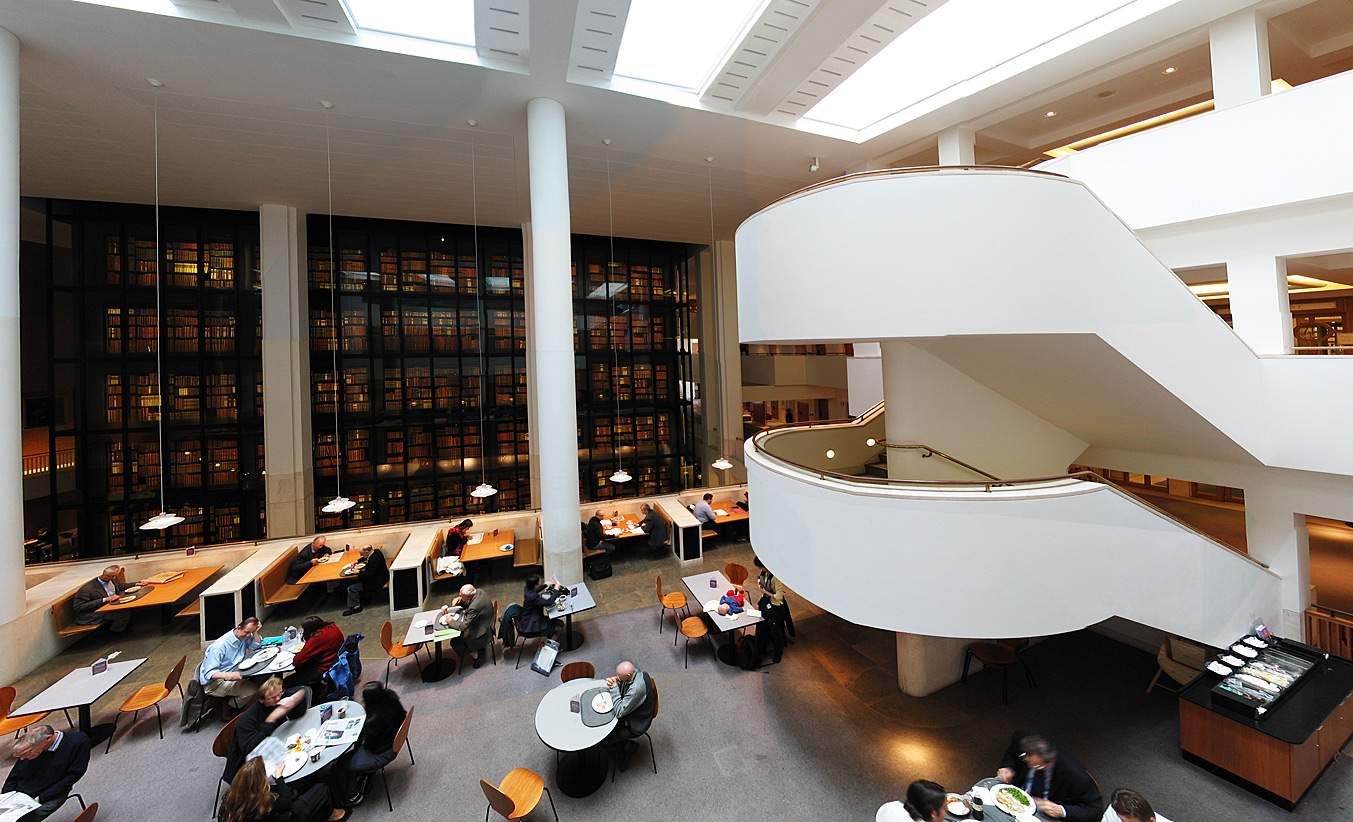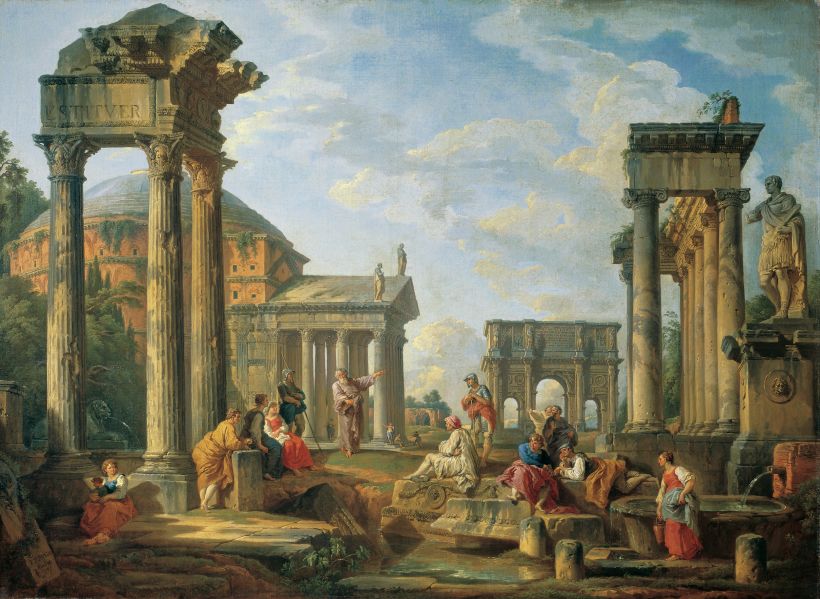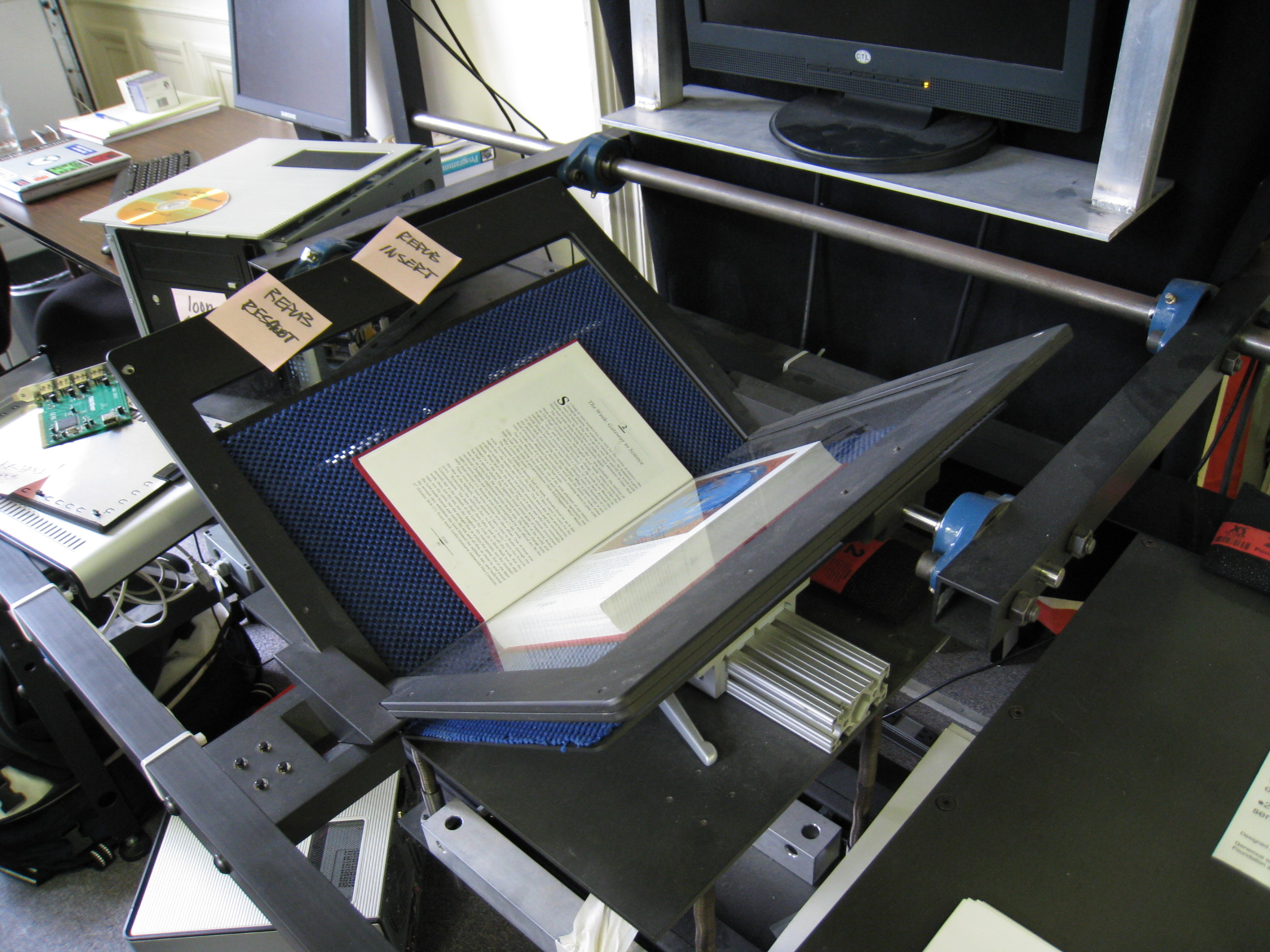|
Seamus Ross
Seamus Ross (born November 12, 1957) is a digital humanities and digital curation academic and researcher based in Canada. He is the son of James Francis Ross, a philosopher, and Kathleen Fallon Ross, a nurse. After graduating from the William Penn Charter School, he earned his A.B. (1979) from Vassar College (United States), his M.A. (1982) from the University of Pennsylvania (USA), and his D.Phil. (1992) from the University of Oxford ( UK). Seamus Ross is Professor at the iSchool at the University of Toronto, also known as the Faculty of Information and from 2009 through 2015 he served as the School's Dean. During 2016, he is Visiting Professor at the School of Information Sciences and Technology, Athens University of Economics and Business (Athens, GR), and Interim Director of the McLuhan Centre for Culture and Technology at the University of Toronto. Before joining Toronto, he was Professor of Humanities Informatics and Digital Curation and Founding Director of HATII (Human ... [...More Info...] [...Related Items...] OR: [Wikipedia] [Google] [Baidu] |
Digital Humanities
Digital humanities (DH) is an area of scholarly activity at the intersection of computing or Information technology, digital technologies and the disciplines of the humanities. It includes the systematic use of digital resources in the humanities, as well as the analysis of their application. DH can be defined as new ways of doing scholarship that involve collaborative, transdisciplinary, and computationally engaged research, teaching, and publishing. It brings digital tools and methods to the study of the humanities with the recognition that the printed word is no longer the main medium for knowledge production and distribution. By producing and using new applications and techniques, DH makes new kinds of teaching possible, while at the same time studying and critiquing how these impact cultural heritage and digital culture. A distinctive feature of DH is its cultivation of a two-way relationship between the humanities and the digital: the field both employs technology in the p ... [...More Info...] [...Related Items...] OR: [Wikipedia] [Google] [Baidu] |
Digital Preservation Europe
The Framework Programmes for Research and Technological Development, also called Framework Programmes or abbreviated FP1 to FP9, are funding programmes created by the European Union/European Commission to support and foster research in the European Research Area (ERA). Starting in 2014, the funding programmes were named Horizon. The funding programmes began in 1984 and continue to the present day. The most recent programme, Horizon Europe, has a budget of 95.5 billion Euros to be distributed over 7 years. The specific objectives and actions vary between funding periods. In FP6 and FP7, focus was on technological research. In Horizon 2020, the focus was on innovation, delivering economic growth faster, and delivering solutions to end users that are often governmental agencies. Background Conducting European research policies and implementing European research programmes is an obligation under the Amsterdam Treaty, which includes a chapter on research and technological developme ... [...More Info...] [...Related Items...] OR: [Wikipedia] [Google] [Baidu] |
Semantic Web
The Semantic Web, sometimes known as Web 3.0, is an extension of the World Wide Web through standards set by the World Wide Web Consortium (W3C). The goal of the Semantic Web is to make Internet data machine-readable. To enable the encoding of semantics with the data, technologies such as Resource Description Framework (RDF) and Web Ontology Language (OWL) are used. These technologies are used to formally represent metadata. For example, Ontology (information science), ontology can describe concepts, relationships between Entity–relationship model, entities, and categories of things. These embedded semantics offer significant advantages such as reasoning engine, reasoning over data and operating with heterogeneous data sources. These standards promote common data formats and exchange protocols on the Web, fundamentally the RDF. According to the W3C, "The Semantic Web provides a common framework that allows data to be shared and reused across application, enterprise, and commu ... [...More Info...] [...Related Items...] OR: [Wikipedia] [Google] [Baidu] |
National Library Of New Zealand
The National Library of New Zealand () is charged with the obligation to "enrich the cultural and economic life of New Zealand and its interchanges with other nations" (National Library of New Zealand (Te Puna Mātauranga) Act 2003). Under the Act, the library's duties include collecting, preserving and protecting New Zealand's documentary heritage, supporting other libraries in New Zealand, and collaborating with peer institutions abroad. The library headquarters is on the corner of Aitken and Molesworth Street, Wellington, Molesworth Streets in Wellington, close to the New Zealand Parliament Buildings and the New Zealand Court of Appeal, Court of Appeal. The National Library is New Zealand's legal deposit library, and the Legal Deposit Office is the country's agency for ISBN and ISSN. The library supports schools through its Services to Schools business unit, which has curriculum and advisory branches around New Zealand. History Origins The National Library of New Zealand w ... [...More Info...] [...Related Items...] OR: [Wikipedia] [Google] [Baidu] |
Royal Society Of Edinburgh
The Royal Society of Edinburgh (RSE) is Scotland's national academy of science and letters. It is a registered charity that operates on a wholly independent and non-partisan basis and provides public benefit throughout Scotland. It was established in 1783. , there are around 1,800 Fellows. The Society covers a broader range of fields than the Royal Society of London, including literature and history. The Fellowship includes people from a wide range of disciplines: science and technology, arts, humanities, medicine, social science, business, and public service. History At the start of the 18th century, Edinburgh's intellectual climate fostered many clubs and societies (see Scottish Enlightenment). Though there were several that treated the arts, sciences and medicine, the most prestigious was the Society for the Improvement of Medical Knowledge, commonly referred to as the Medical Society of Edinburgh, co-founded by the mathematician Colin Maclaurin in 1731. Maclaurin was u ... [...More Info...] [...Related Items...] OR: [Wikipedia] [Google] [Baidu] |
YouTube
YouTube is an American social media and online video sharing platform owned by Google. YouTube was founded on February 14, 2005, by Steve Chen, Chad Hurley, and Jawed Karim who were three former employees of PayPal. Headquartered in San Bruno, California, it is the second-most-visited website in the world, after Google Search. In January 2024, YouTube had more than 2.7billion monthly active users, who collectively watched more than one billion hours of videos every day. , videos were being uploaded to the platform at a rate of more than 500 hours of content per minute, and , there were approximately 14.8billion videos in total. On November 13, 2006, YouTube was purchased by Google for $1.65 billion (equivalent to $ billion in ). Google expanded YouTube's business model of generating revenue from advertisements alone, to offering paid content such as movies and exclusive content produced by and for YouTube. It also offers YouTube Premium, a paid subs ... [...More Info...] [...Related Items...] OR: [Wikipedia] [Google] [Baidu] |
British Library
The British Library is the national library of the United Kingdom. Based in London, it is one of the largest libraries in the world, with an estimated collection of between 170 and 200 million items from multiple countries. As a legal deposit library, it receives copies of all books produced in the United Kingdom and Ireland, as well as a significant proportion of overseas titles distributed in the United Kingdom. The library operates as a non-departmental public body sponsored by the Department for Culture, Media and Sport. The British Library is a major research library, with items in many languages and in many formats, both print and digital: books, manuscripts, journals, newspapers, magazines, sound and music recordings, videos, play-scripts, patents, databases, maps, stamps, prints, drawings. The Library's collections include around 14 million books, along with substantial holdings of manuscripts and items dating as far back as 2000 BC. The library maintains a programme for ... [...More Info...] [...Related Items...] OR: [Wikipedia] [Google] [Baidu] |
Archival Science
Archival science, or archival studies, is the study and theory of building and Curator, curating archives, which are collections of documents, Sound recording and reproduction, recordings, photographs and various other materials in physical or digital formats. To build and curate an archive, one must acquire and evaluate the materials, and be able to access them later. To this end, archival science seeks to improve methods for Archival appraisal, appraising, storing, Preservation (library and archival science), preserving, and Archival processing, processing (arranging and describing) collections of materials. An archival record preserves data that is not intended to change. In order to be of value to society, archives must be trustworthy. Therefore, an archivist has a responsibility to authenticate archival materials, such as historical documents, and to ensure their reliability, integrity, and usability. Archival records must be what they claim to be; accurately represent the a ... [...More Info...] [...Related Items...] OR: [Wikipedia] [Google] [Baidu] |
Cultural Heritage
Cultural heritage is the heritage of tangible and intangible heritage assets of a group or society that is inherited from past generations. Not all heritages of past generations are "heritage"; rather, heritage is a product of selection by society. Cultural heritage includes cultural property, tangible culture (such as buildings, monuments, landscapes, archive materials, books, works of art, and artifacts), intangible heritage, intangible culture (such as folklore, traditions, language, and knowledge), and natural heritage (including culturally significant landscapes, and biodiversity).Ann Marie Sullivan, Cultural Heritage & New Media: A Future for the Past, 15 J. MARSHALL REV. INTELL. PROP. L. 604 (2016) https://repository.jmls.edu/cgi/viewcontent.cgi?article=1392&context=ripl The term is often used in connection with issues relating to the protection of Indigenous intellectual property. The deliberate action of keeping cultural heritage from the present for the future is known ... [...More Info...] [...Related Items...] OR: [Wikipedia] [Google] [Baidu] |
Digital Archaeology
Digital archaeology is the application of information technology and digital media to archaeology. This includes the use of tools such as databases, 3D models, digital photography, virtual reality, augmented reality, and geographic information systems. Computational archaeology, which covers computer-based analytical methods, can be considered a subfield of digital archaeology, as can virtual archaeology. Digital archaeology plays a key role in data collection, analysis, and public outreach, enhancing the study and preservation of archaeological sites and artifacts. The use of digital technology to conduct archaeological research allows data to be collected without the invasion or destruction of archaeological sites and the cultural heritage they hold, aiding the preservation of archaeological data. This is how many early archaeological sites were discovered in-depth. Applications of this technology have aided the reconstruction of historical monuments and artefacts such as ... [...More Info...] [...Related Items...] OR: [Wikipedia] [Google] [Baidu] |
Digital Repository
A digital library (also called an online library, an internet library, a digital repository, a library without walls, or a digital collection) is an online database of digital resources that can include text, still images, audio, video, digital documents, or other digital media formats or a library accessible through the internet. Objects can consist of digitization, digitized content like Printing, print or photography, photographs, as well as born-digital, originally produced digital content like word processor files or social media posts. In addition to storing content, digital libraries provide means for organizing, searching, and information retrieval, retrieving the content contained in the collection. Digital libraries can vary immensely in size and scope, and can be maintained by individuals or organizations. The digital content may be stored locally, or accessed remotely via computer networks. These information retrieval systems are able to exchange information with each ... [...More Info...] [...Related Items...] OR: [Wikipedia] [Google] [Baidu] |
Digitisation
Digitization is the process of converting information into a Digital data, digital (i.e. computer-readable) format.Collins Dictionary. (n.d.). Definition of 'digitize'. Retrieved December 15, 2021, from https://www.collinsdictionary.com/dictionary/english/digitize The result is the representation of an object, image, sound, document, or Signal (electrical engineering), signal (usually an analog signal) obtained by generating a series of numbers that describe a discrete set of points or Sample (signal), samples. The result is called ''Digital data, digital Group representation, representation'' or, more specifically, a ''digital image'', for the object, and ''digital form'', for the signal. In modern practice, the digitized data is in the form of binary numbers, which facilitates processing by digital computers and other operations, but digitizing simply means "the conversion of analog source material into a numerical format"; the decimal or any other number system can be used i ... [...More Info...] [...Related Items...] OR: [Wikipedia] [Google] [Baidu] |










